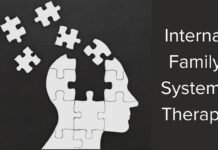Last Updated on March 12, 2024 by admin
What Are the Signs and Symptoms of Strabismus and Nystagmus? If you experience dancing eyes or nystagmus, you should see a neuro-optometrist. Here is a list of symptoms of strabismus. Read on whether you need to know a neuro-optometrist for your condition.
Table of Contents
Symptoms of strabismus
When to see a Neuro-Optometrist for strabismus is not always a necessity, but some symptoms may be a sign. These symptoms may range from double vision to headaches to difficulty seeing distant objects. You should also visit your eye doctor if you experience any of these symptoms. Your doctor will likely prescribe glasses, a patch, or eye exercises to correct your condition. In extreme cases, you may need to have surgery.
Patients may experience either double vision or amblyopia. While most adults suffer from double vision, children often do not, and it may just appear as though they are squinting. Children do not experience double vision because their brain suppresses the image in the affected eye. However, children who favor one look may also develop amblyopia.
Symptoms of nystagmus
When to see a neuro-optometrist for nystagmus, your optometrist will evaluate your vision and eye movements to determine the cause of this condition. For example, you may have acquired this condition or may be a sign of another medical problem. Your optometrist will also recommend a complete eye examination to determine the best course of treatment.
Children with nystagmus usually begin presenting with eye movements that occur in any direction, despite the advice of gaze. This is because their eyes will move up and down to compensate for their unsteady vision, which is caused by dysfunction in some brain regions. Some patients may also have an underlying condition, such as central nervous system disease, diabetes, or certain medications.
A neuro-optometrist can perform several tests to diagnose nystagmus. First, a patient will undergo a Dix Hallpike test, which measures eye movement patterns. A neuro-optometrist can also perform Optokinetic nystagmus tests, which involve presenting images to the patient and watching their eye movements. If the patient responds with positive eye movements, the condition is most likely due to a brain disorder.
Symptoms of dancing eyes
There are several causes of nystagmus, also known as dancing eyes. While some of these conditions can be life-threatening, most are not. Dancing eyes can sometimes result from a twirling motion, significantly affecting one eye. Other times, it’s a sign of a more severe problem, like an underlying neurological condition.
Some people may benefit from a referral to a Neuro-Optometrist in Denver, as can adults who have suffered a traumatic brain injury. For example, an eye exam following a TBI patient may reveal that they have experienced problems with eye tracking or ocular teaming. In addition, even seemingly healthy children can benefit from an appointment with a neuro-optometrist, as more than half of people with TBI have eye tracking or visual teaming problems.
In children, the best way to get a diagnosis is to undergo an eye exam. A neurologically-trained neuro-optometrist will examine the eye and assess the condition’s cause. For example, nystagmus may be caused by various reasons, but the neurological injury is the most common. A neuro-optometrist will be able to diagnose the problem and prescribe an appropriate treatment plan.
Symptoms of traumatic brain injury
Traumatic brain injury, or TBI, can result in visual problems. These can be caused by various factors, including a head injury, a concussion, or a brain tumor. A neuro-optometrist specializes in the diagnosis and treatment of TBI-related visual aberrations. While the symptoms of TBI in children may be similar to those experienced by adults, their functional impact is unique. Children may be unaware of any cognitive impairments that result from a brain injury until they grow older. A child with a TBI may face various emotional and physical challenges.
The most effective treatment for a traumatic brain injury requires an interdisciplinary team approaTherefore, neurologists, optometrists, physiatrists, physical therapists, and occupational therapists should all be part of the treatment plan. In addition, a neuro-optometric specialist should be consulted immediately after a TBI accident to evaluate for vision problems.
Read More: Most Common Injuries in a Car Accident






















